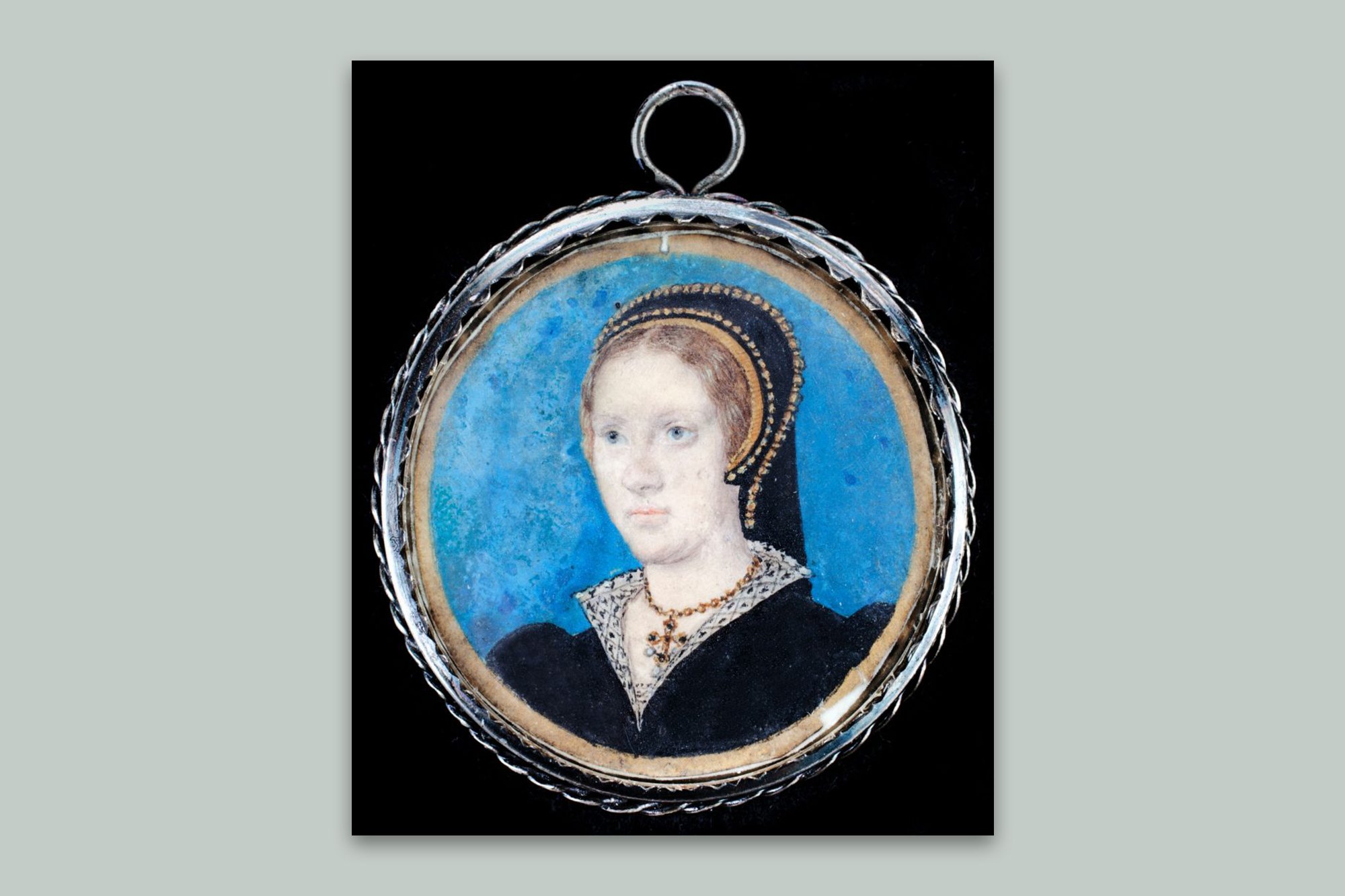
The court of Henry VIII, home to ruthless plots, intrigue, and power plays, was not for the faint-hearted. Participate at your peril, those who were beheaded would surely warn from beyond the grave. Even now, centuries after their deaths, those close to the king are continuing to stir up drama—or at least their portraits are. The nose of one painting has prompted researchers to question who the sitter and the artist were, while another’s head gave curators pause when installing it.
A miniature painting of a woman long been believed to be Katherine Parr, Henry’s sixth wife who managed to survive the curse of his courtship, may actually be Mary Tudor, Henry’s first daughter who is better known today as “Bloody Mary.” According to art historian Emma Rutherford, it’s all in the nose.
“Mary’s nose, frankly, was rather bulbous and upturned, while Parr’s was more aquiline,” she told the Guardian. “Both Mary and Katherine had reddish hair and blueish eyes, and were a similar age of around 30 when this miniature was done. Hence some confusion. They wore similar clothes too, though Parr’s were usually more dressy. But the noses are clearly different.”
Thomas Cromwell’s portrait unveiled at Hever Castle. Photo: Vikki Rimmet
Rutherford began studying the work while putting together the exhibition “The Reflected Self: Portrait Miniatures” at Compton Verney House, about 100 miles northwest of London, until February 23, 2025. She initially made comparisons with other portraits of the two women. Parr’s preeminent portrait is Master John’s full length painting at London’s National Portrait Gallery. The best known of Mary, painted in the 1550s while she was queen, is by Antonis Mor in Madrid’ Prado museum; another by Hans Eworth is also in London’s Portrait Gallery.
Her observations about both women’s noses led her to seek more evidence and her claim was soon backed up by Tudor jewelry expert Nicola Tallis. Tallis noted that the sitter in the miniature painting is wearing a cross with black diamonds that matches a necklace described in Mary’s expenses records. Henry VIII gave it to his daughter in 1546, the same year that the portrait was likely painted, Rutherford believes. It was very likely by Susanna Horenbout, the first known female artist in England and a friend of Mary. The portrait may even have been commissioned by Parr, who was a strong advocate for both Mary and her half-sister Elizabeth’s interests at court.
Court interest could turn deadly, however, if someone with the king’s ear had it out for your head, as Thomas Cromwell did for Anne Boleyn’s. Henry’s six wives are best known today for their various grisly fates, but few had so swift and spurious a downfall as Boleyn. After she fell out with Cromwell, her former ally and the king’s chief minister, he spread unfounded rumors of adultery to the king and his court. Before long she was convicted of treason and sentenced to public execution.
A curator and castle historian at Hever Castle holds up a portrait of Henry VIII in the Great Chamber once inhabited by the Boleyn family. Photo courtesy of Hever Castle.
Cromwell’s alleged hand in Boleyn’s death has proved a dilemma for curators at Hever Castle, her childhood home, after they acquired a rare portrait of the former rumormonger. It will soon go on public display at the historic house, which recently debuted a newly restored Tudor-style interior.
Assistant curator Dr. Owen Emmerson admitted to having some hesitations about the acquisition, fearing it may anger Boleyn’s spirit. “However, I remembered that before Anne’s downfall, she had threatened Cromwell with his life, telling him that she wanted his head off his shoulders,” he said in a press statement. “I then reasoned that, since the portrait only shows his head, we were, in a way, fulfilling her wishes.” (Cromwell did, after all, end up beheaded as well after Henry accused him of treason, having heard rumors his advisor wished to marry his daughter Mary, bulbous nose and all.)
If accounts of Anne Boleyn haunting her old family home are true, we can only imagine what her reaction would be to discovering that the man who masterminded her demise is now a pin-up in her childhood bedroom. Luckily, some sensitivity has been shown, and Cromwell’s portrait will be hung in Hever’s Long Gallery, commissioned by Henry’s fourth wife Anne of Cleves when she lived at the castle.
The painting won’t be less welcome there than at its previous location of Kimbolton Castle. It was there that Henry’s first wife Catherine of Aragon lived out her final days after her marriage to the king was annulled. Cromwell had played a key role in arranging the divorce and helping Henry get rid of her to marry Boleyn.